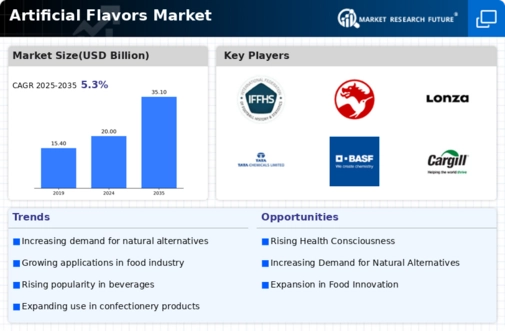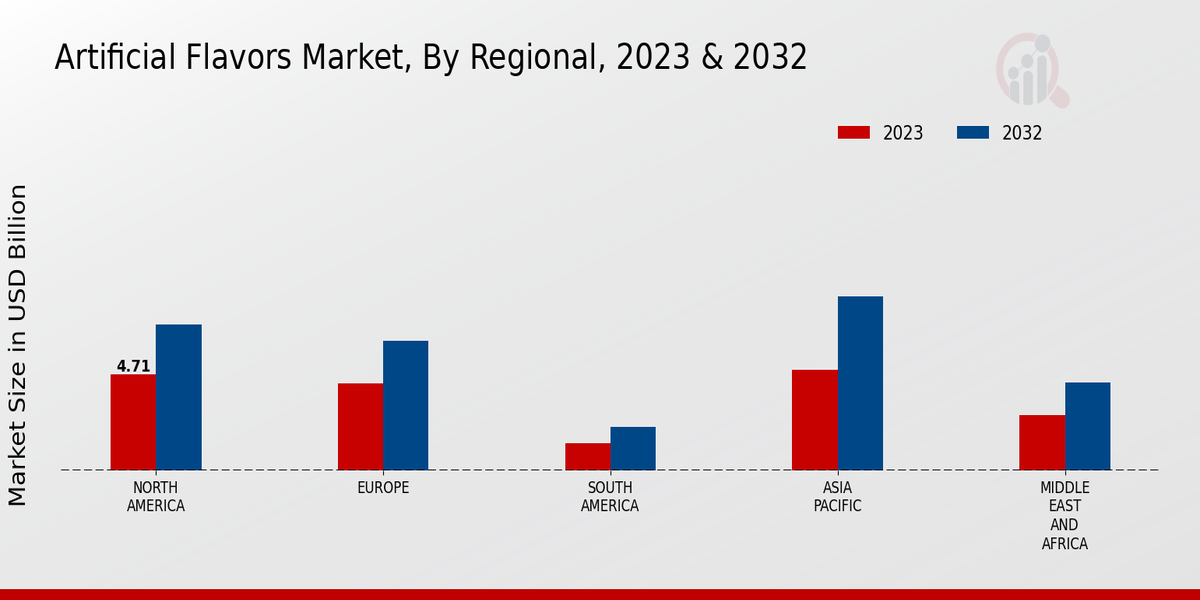Market Trends and Projections
Expansion of the Beverage Sector
The beverage sector significantly contributes to the Global Artificial Flavors Market Industry, as manufacturers seek to create unique and appealing flavors to attract consumers. The rise of non-alcoholic beverages, including flavored waters and energy drinks, has prompted companies to invest in artificial flavor development. This sector's growth is expected to propel the market, with projections indicating a market value of 35.1 USD Billion by 2035. The continuous introduction of novel flavors and formulations is likely to sustain consumer interest and drive sales, thereby reinforcing the industry's overall expansion.
Rising Demand for Processed Foods
The Global Artificial Flavors Market Industry experiences a notable surge in demand for processed foods, driven by changing consumer lifestyles and preferences. As urbanization accelerates, consumers increasingly seek convenient meal options that often incorporate artificial flavors to enhance taste. In 2024, the market is projected to reach 20.0 USD Billion, reflecting a growing inclination towards ready-to-eat meals and snacks. This trend is likely to continue, with the market expected to expand further as the global population increases and food manufacturers innovate to meet consumer expectations for flavor and convenience.
Regulatory Support and Safety Standards
Regulatory frameworks and safety standards significantly influence the Global Artificial Flavors Market Industry, as they ensure the safety and quality of artificial flavoring agents. Governments worldwide are increasingly establishing guidelines that promote the responsible use of artificial flavors in food products. This regulatory support fosters consumer confidence and encourages manufacturers to innovate while adhering to safety protocols. As the industry navigates these regulations, it is likely that compliance will enhance market stability and growth, ultimately benefiting consumers and producers alike.
Health Consciousness and Flavor Innovation
As consumers become more health-conscious, the Global Artificial Flavors Market Industry adapts by innovating flavors that align with health trends. Manufacturers are increasingly developing artificial flavors that cater to low-sugar, low-calorie, and functional food products. This shift not only meets consumer demands but also allows companies to differentiate their offerings in a competitive market. The anticipated compound annual growth rate of 5.26% from 2025 to 2035 suggests that the industry is poised for sustained growth, as health-oriented products become more mainstream and consumers seek flavorful yet healthier options.
Technological Advancements in Flavor Production
Technological advancements play a crucial role in the Global Artificial Flavors Market Industry, enabling more efficient and cost-effective production processes. Innovations in extraction and synthesis techniques allow for the creation of complex flavor profiles that were previously unattainable. These advancements not only enhance flavor quality but also reduce production costs, making artificial flavors more accessible to manufacturers. As the industry evolves, it is likely that these technologies will continue to drive growth, facilitating the introduction of new flavors and formulations that cater to diverse consumer preferences.










